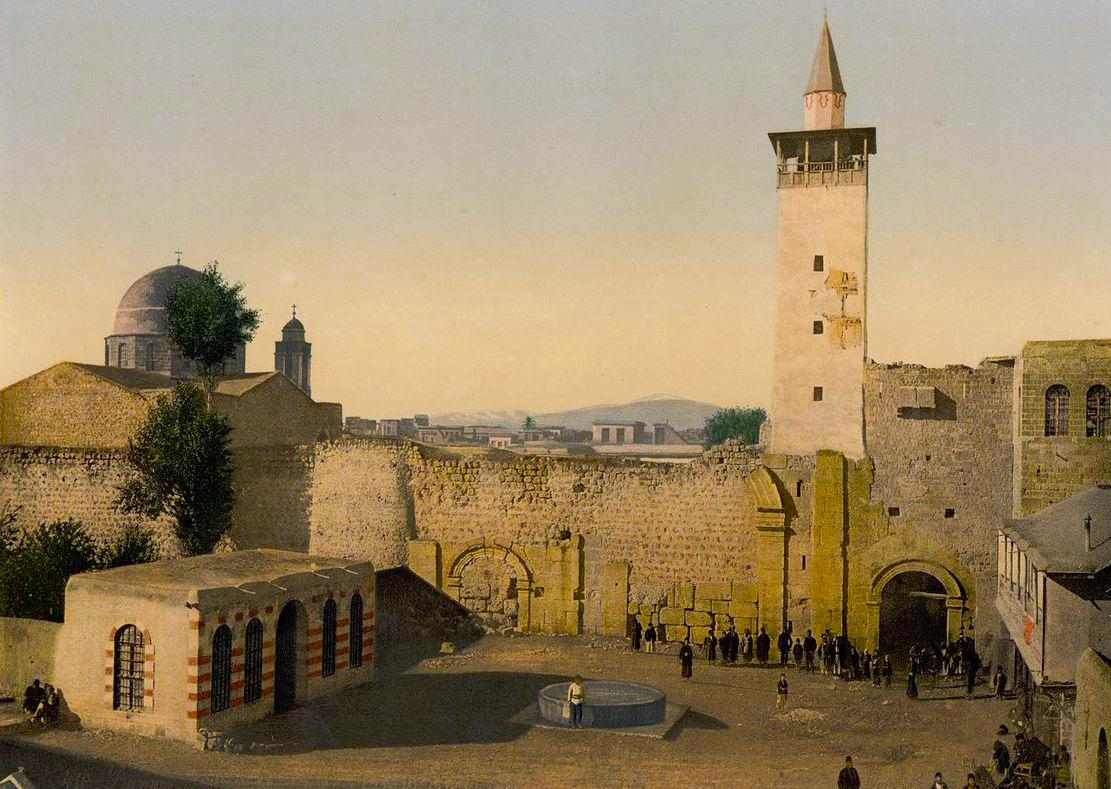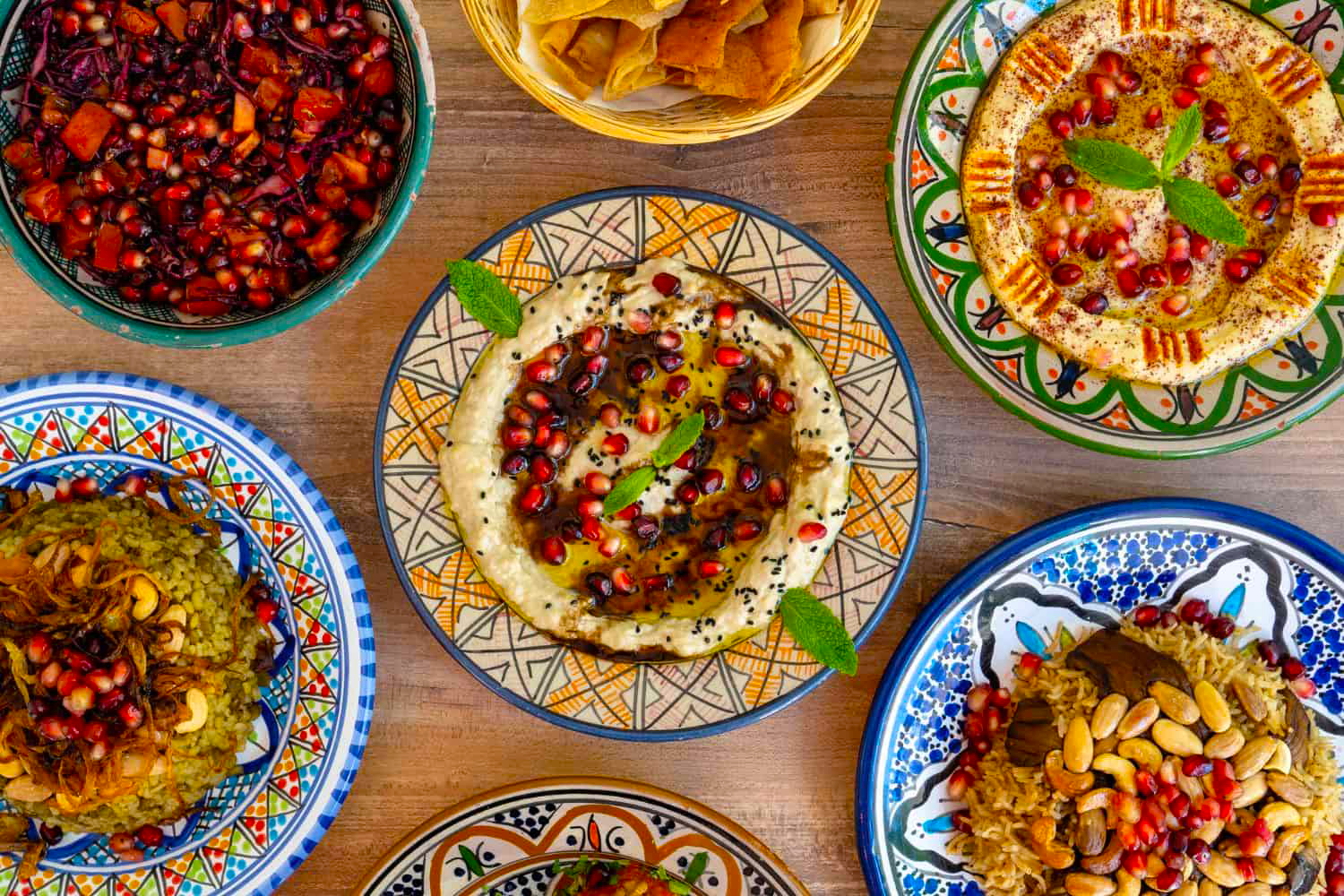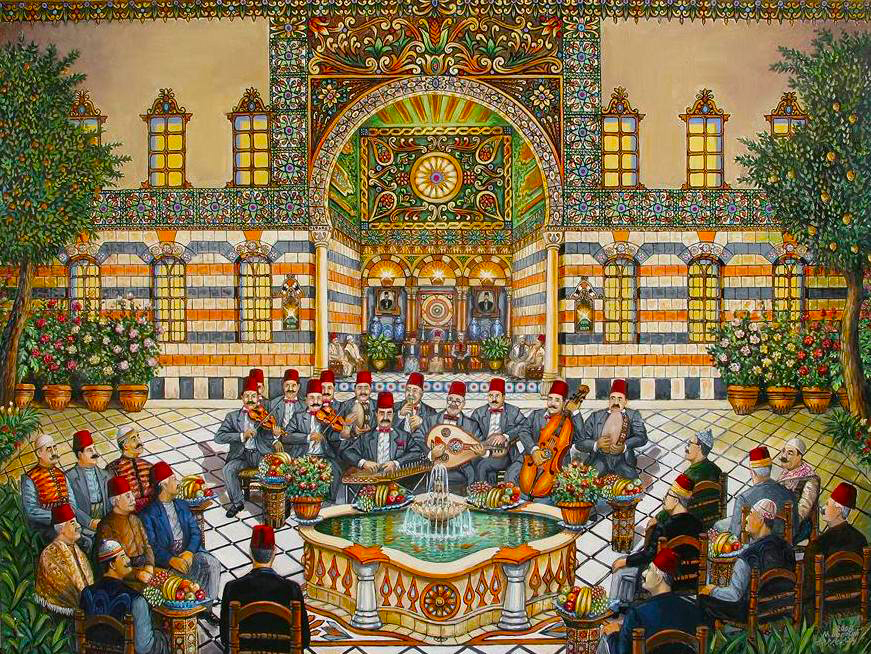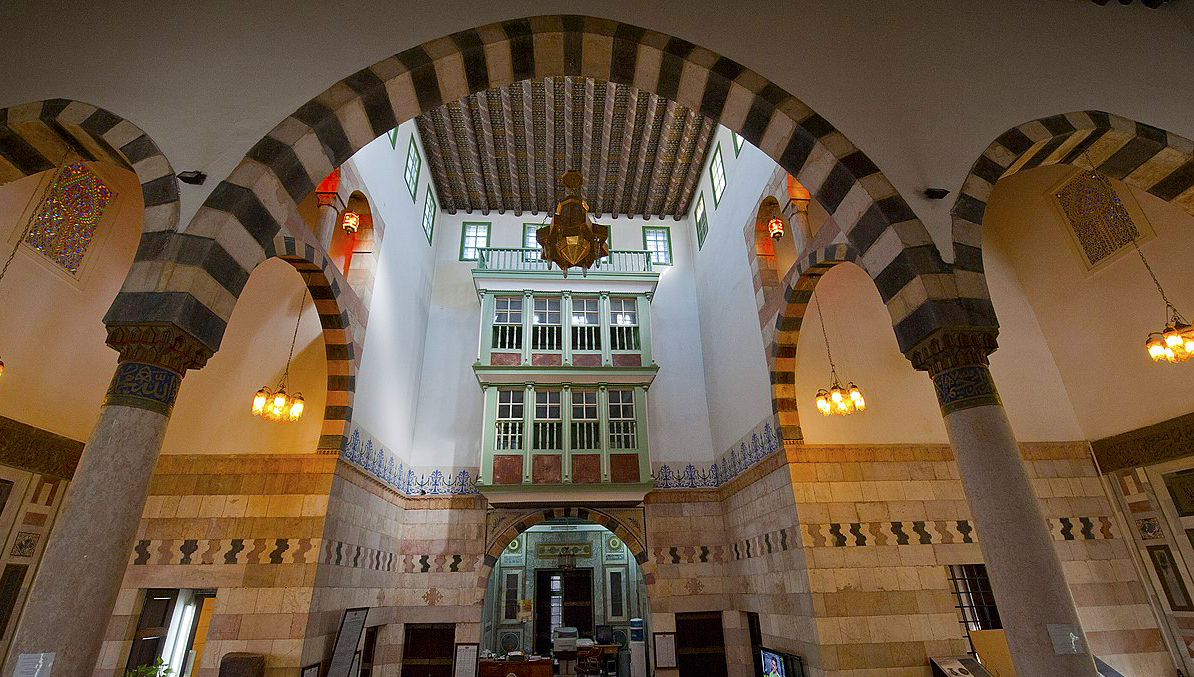Al-Madrasa al-Jaqmaqiyeh in Damascus: A Jewel of Mamluk Architecture: Tucked away in the winding lanes of Old Damascus lies al-Madrasa al-Jaqmaqiyeh (Arabic: المدرسة الجقمقية), one of the finest surviving examples of Mamluk architecture in Syria. Built in the 15th century, this religious and educational complex is a quiet treasure that reflects the sophistication of Islamic art, architecture, and scholarship during the Mamluk era.
For travelers with a passion for history and architecture—or those who want to explore the quieter, lesser-known side of Damascus—al-Madrasa al-Jaqmaqiyeh offers a peaceful, immersive, and enlightening experience.
What Is Al-Madrasa al-Jaqmaqiyeh?
Al-Madrasa al-Jaqmaqiyeh was a madrasa—a religious school—established during the Mamluk period in Damascus. Like many madrasas of its time, it served multiple functions: a school for Islamic sciences, a mosque for prayer, and a mausoleum for its founder.
The structure is not only significant for its religious and educational role but also for its fine architecture, particularly its intricately carved stone portal, elegant mihrab, and domed mausoleum chamber.
Today, the madrasa is home to the Museum of Arabic Calligraphy, making it a compelling destination for those interested in both Islamic architecture and traditional arts.
Historical Background
Built by Prince Sayf ad-Din Jaqmaq
The madrasa was commissioned in 1419 CE (822 AH) by Sayf ad-Din Jaqmaq, a prominent Mamluk amir (military governor) who later became the Sultan of Egypt. At the time of the madrasa’s construction, he was serving as the viceroy of Damascus, overseeing military and civic affairs in the region.
Jaqmaq was known for his patronage of architecture and education. Building a madrasa was not only an act of religious devotion but also a means of leaving a lasting personal legacy.
A Center of Learning and Worship
Like other madrasas in Islamic cities, al-Jaqmaqiyeh was built to provide instruction in Qur’anic studies, Islamic jurisprudence (fiqh), Hadith, and other religious sciences. It also included a small mosque, accommodations for students or scholars, and a tomb for Jaqmaq himself.
The madrasa remained in use for centuries, and while its religious and educational functions have declined, its cultural and historical significance has grown.
Architectural Highlights
Al-Madrasa al-Jaqmaqiyeh is a superb example of late Mamluk architecture, blending military precision with artistic finesse. While relatively small in scale, its beauty lies in the details.
The Entrance Portal
The building’s main portal is arguably its most iconic feature. It consists of:
- A large pointed arch framed by an elegant muqarnas niche (stalactite-like carvings)
- Alternating stone colors (ablaq technique) using black and white limestone
- Intricate arabesques and floral carvings surrounding the doorway
- An inscription band in classical Arabic calligraphy, detailing the date of construction and the name of the founder
This entrance alone is worth a visit and is considered one of the most beautiful in Damascus.
Interior Courtyard
Once inside, visitors find a small interior courtyard—a standard feature of traditional Islamic schools. It features:
- Stone flooring with geometric designs
- A small fountain for ablutions (wudu)
- Access to teaching and prayer rooms
The modest scale of the courtyard reflects the madrasa’s more focused, intimate educational purpose.
The Mihrab and Prayer Hall
The mihrab—a niche indicating the direction of Mecca—is made of finely carved stone and decorated with:
- Marble inlays
- Geometric patterns
- Qur’anic verses
The adjacent prayer hall is relatively small but solemn, with high ceilings, simple stucco decoration, and windows that allow soft, natural light.
The Mausoleum Dome
To the side of the courtyard lies the domed tomb chamber, where Jaqmaq was buried. The muqarnas dome features:
- Intricate stone transition zones
- Decorative squinches (architectural devices that allow a square base to support a circular dome)
- Carved Quranic inscriptions
The tomb chamber adds a layer of spiritual symbolism to the building—linking earthly knowledge with eternal reward.
Current Use: Museum of Arabic Calligraphy
A Living Museum
Today, the madrasa has been transformed into the Museum of Arabic Calligraphy (Arabic: متحف الخط العربي), operated under the authority of the Syrian Directorate-General of Antiquities and Museums.
The museum features:
- Historical calligraphy manuscripts
- Panels of Qur’anic verses written in Kufic, Naskh, Thuluth, and Diwani scripts
- Ink pots, reed pens (qalam), and tools used by calligraphers
- Educational exhibits explaining the evolution of Arabic script
It’s a quiet and contemplative museum experience, housed within the very walls that once echoed with scholarly discussion and religious devotion.
Why It’s Worth Visiting
For visitors, this museum offers a rare opportunity to explore both a historic building and an art form that is deeply embedded in Islamic culture. Arabic calligraphy is more than beautiful writing—it’s a spiritual and philosophical tradition, and this museum presents it in a way that is accessible, peaceful, and engaging.
Location and Visitor Information
Where Is It?
Al-Madrasa al-Jaqmaqiyeh is located in the Suq al-Buzuriyah area, in the heart of Old Damascus, close to major attractions such as:
- Al-Hamidiyah Souq
- Azem Palace
- Umayyad Mosque
- Beit al-Aqad and Beit Nizam
It’s easily reachable on foot for anyone walking through the old city.
Opening Hours and Entry
- Open: Most days of the week (usually from morning until afternoon)
- Entry fee: Often free or minimal (check locally)
- Guided visits: Available upon request or through cultural tourism offices
As always in Old Damascus, it is recommended to visit with a local guide or as part of a cultural walking tour for the best experience.
Photography
Photography is generally allowed inside the museum, especially of the calligraphy displays, though flash photography may be restricted to protect delicate materials.
Tips for Visitors
- Visit early in the day to avoid crowds and get the best light for photography.
- Dress modestly, as the madrasa remains a religious and cultural site.
- Take your time in the museum, especially in the tomb chamber, which is often overlooked.
- Pair your visit with nearby attractions like Azem Palace and Khan As’ad Pasha for a deeper dive into Mamluk and Ottoman architecture.
Why Al-Madrasa al-Jaqmaqiyeh Matters
A Symbol of Mamluk Patronage
This madrasa reflects the Mamluks’ commitment to religious education and urban beautification. It stands as a symbol of how rulers used architecture to express power, faith, and legacy.
A Place of Art, Not Just Worship
While its original function was religious and educational, today it has become a space for appreciating the visual language of Arabic culture through calligraphy. It’s a fine example of how historic buildings can be reimagined to serve cultural education.
A Quiet Jewel in the Old City
Unlike major tourist sites such as the Umayyad Mosque, al-Jaqmaqiyeh remains relatively undiscovered. Its peaceful setting and artistic focus make it ideal for visitors seeking calm, inspiration, and a more personal encounter with Islamic heritage.
Final Thoughts
Al-Madrasa al-Jaqmaqiyeh is a hidden gem that quietly tells the story of Damascus’s scholarly past, architectural brilliance, and enduring love for the written word. From its dazzling stone portal to its tranquil calligraphy displays, it offers a memorable experience for anyone exploring the old city.
In a place as layered and historic as Damascus, al-Jaqmaqiyeh stands out not for its size, but for its soul. It is a place where faith, knowledge, art, and memory still live on—and where visitors are welcome to discover them in peace.



